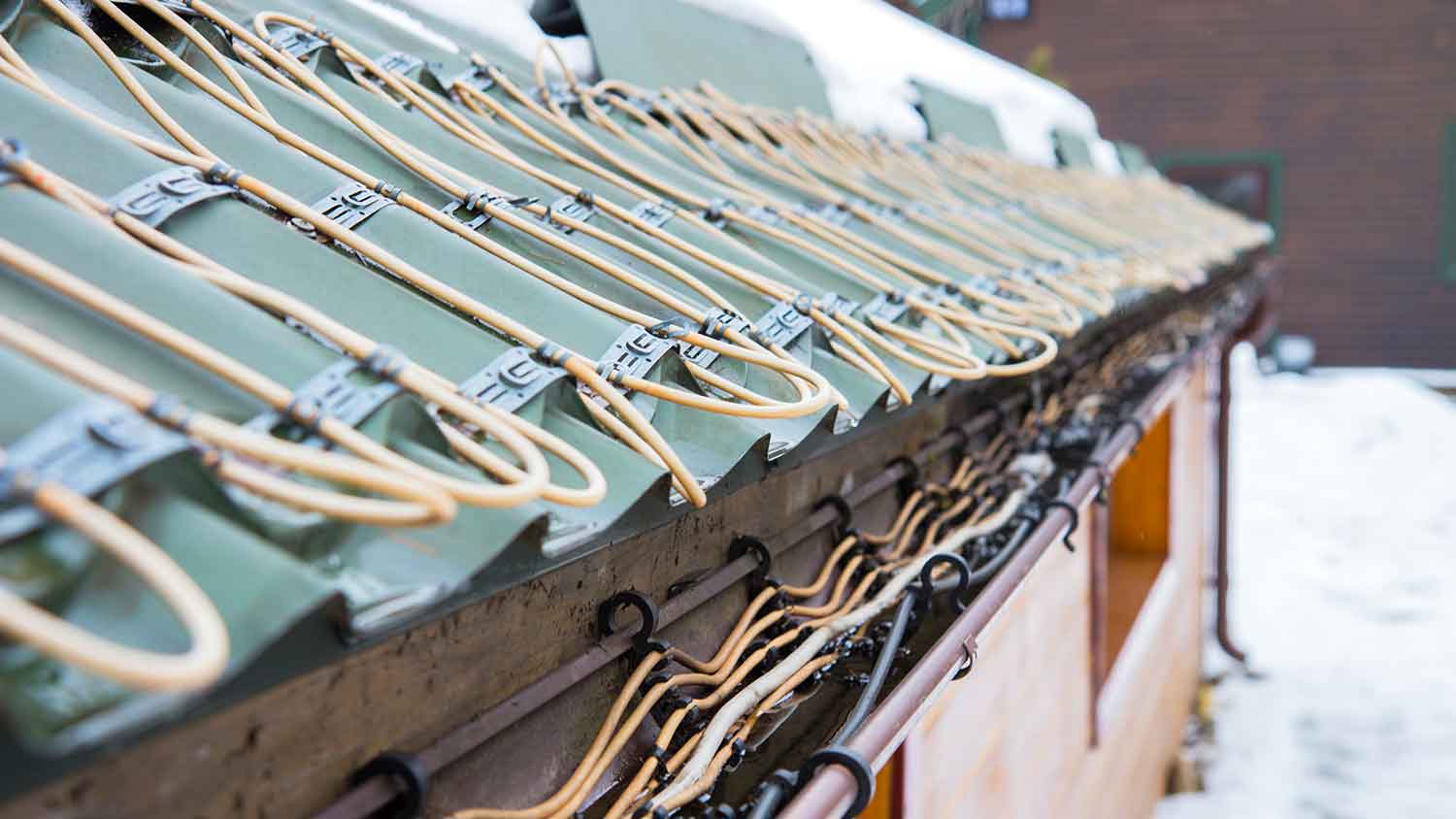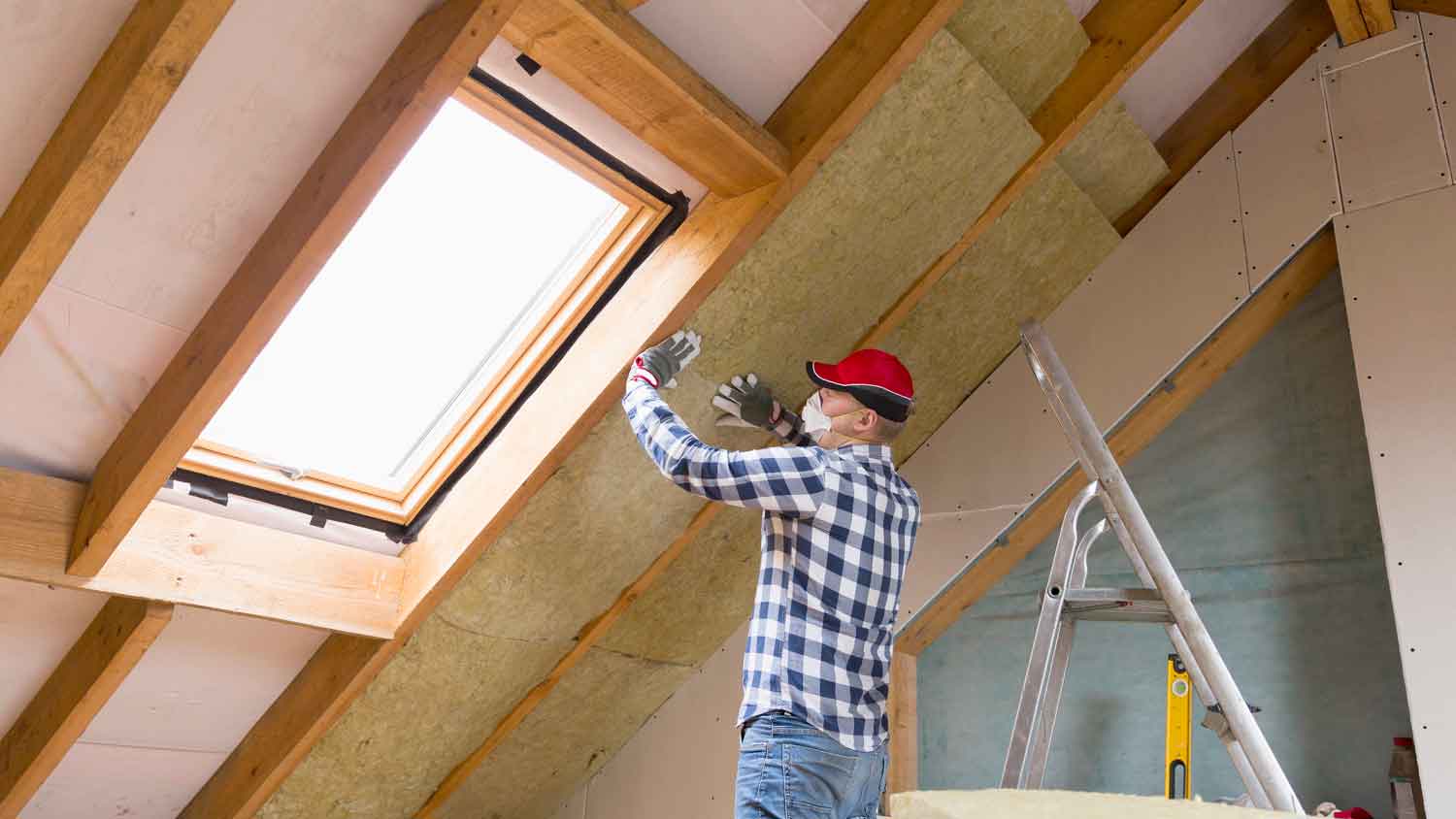
Discover the average roof heating cable installation cost, key price factors, and how to budget for your project. Learn how to save and what to expect.
Icicles might be pretty, but they’re more dangerous than they look


Icicles indicate that heat is escaping through your attic, so they suggest an efficiency issue.
Icicles and ice dams can lead to severe issues, including damaged roofing materials, mold growth, and even roof collapse.
The best way to fix the problem is to ensure your home is properly insulated, but you can also pay for roof snow removal as needed.
When the temperatures dip, and snow covers the ground, there are few things that add more to the picturesque winter landscape than icicles hanging from your roof or gutters. Unfortunately, this indicates problems with your home’s efficiency and can lead to major property damage and even personal injury. Knowing why icicles form on your roof and how to prevent them is crucial for keeping yourself and your home safe in the winter months.
Icicles form when snow on your roof melts and then refreezes when it reaches your eaves. This only happens when heat escapes through your attic and then your roof, which heats up the snow above the melting point. When the melted snow drips down toward the edges of your roof where heat isn’t escaping, the water refreezes and forms icicles.
In many cases, icicles indicate an issue with an ice dam, which is when a mass of ice forms along the edge of the eave and prevents the melting snow from making its way into your gutters for disposal.
In other cases, clogged gutters that should move melting snow away from your home could be the underlying issue. If the snow on your roof heats up and melts into the gutters, clogs can hold the water there until it refreezes. Eventually, the ice builds up in the gutters until spilling over the sides and forming icicles.
Yes, icicles on your roof are a problem, and they can lead to a slew of issues that any homeowner will want to avoid.
First and foremost, icicles pose a risk to anyone walking underneath them. Especially on sunny winter days, the icicles can weaken, dislodge, and fall. Small icicles may not be sharp enough to break skin, but heavier icicles can cause minor and sometimes even fatal injuries if you or someone else in your home happens to be underneath them when they fall.
Similarly, icicles can fall on cars parked under or near your eaves and cause damage. Also at risk could be mailboxes, PVC railings on stoops, lawn furniture, and anything else that sits around the perimeter of your home.
If you have gutters with icicles forming on the edge, it often means the gutters themselves are full of refrozen snowmelt. This adds a lot of weight to your gutters and can pull them away from the fascia boards, which can contribute further to clogged and falling gutters. Gutters that don’t hang properly on your home can lead to additional problems, including water damage, mold growth on or under the edge of your roof, and foundation damage.
Icicles often indicate problems with ice dams on your roof, which means ice and melted water are sitting against your roof for extended periods. This can increase the risk of roof leaks, as the water has more time to find its way through your roofing system.
In extreme cases, icicles and the ice dams that often cause them can lead to excessive snow and ice build-up on your roof, potentially causing complete collapse and major structural damage. If you notice signs of an ice dam forming on your roof, it’s important to take immediate action to prevent structural collapse.

The best way to prevent icicles from forming on your roof is to treat the underlying problem by properly insulating your home. If you have an attic, have a professional come in to test the space and replace insulation as needed. If you don’t have an attic space, you might need a pro to replace drywall on the ceilings on your upper floor, along with reinsulating the space behind it. This will help prevent heat from escaping through your roof and contributing to ice dams above.
Another permanent solution would be to install roof heating coils on your roof that can melt the snow and ice dams as they build up. Keep in mind, though, that this doesn’t address the underlying issue and shouldn’t be a stand-alone, so you’ll often need to pay for other solutions in addition to the cost to install roof heating cables.
Finally, you have more manual methods of removing the snow from your roof. You can hire a local snow removal company to rake snow off of your roof before it melts, or you can use a salt solution to lower the melting point. Manual removal is the better option, though, as salt solutions can damage and stain your roof over time.
Don't use salt or ice melt blends on your roof. Most of these products contain salt, which can lead to roof discoloration, rusting of roof nails, and staining. Instead of buying these products, call a snow and ice removal pro for assistance.
From average costs to expert advice, get all the answers you need to get your job done.

Discover the average roof heating cable installation cost, key price factors, and how to budget for your project. Learn how to save and what to expect.

Winter’s icy chandeliers can pose more of a hazard than you might think. So should you knock down icicles or let them disappear with warmer weather? Find out here.

Ice dams can cause roof and water damage and even structural damage to your home. Learn what causes them and how to prevent them to avoid property damage.

It’s snowing up a storm outside when you start to wonder: How much snow can my roof hold? Use our snow load calculator to determine your roof’s limits.

Wondering how to prevent icicles on roofs? While you can't keep it from snowing, you can take steps to keep the icicles at bay. Find out how.

Say farewell to gutter-clogging ice that ruins roofs and puts a damper on enjoying the cold weather. Learn how to remove ice dams yourself in this guide.